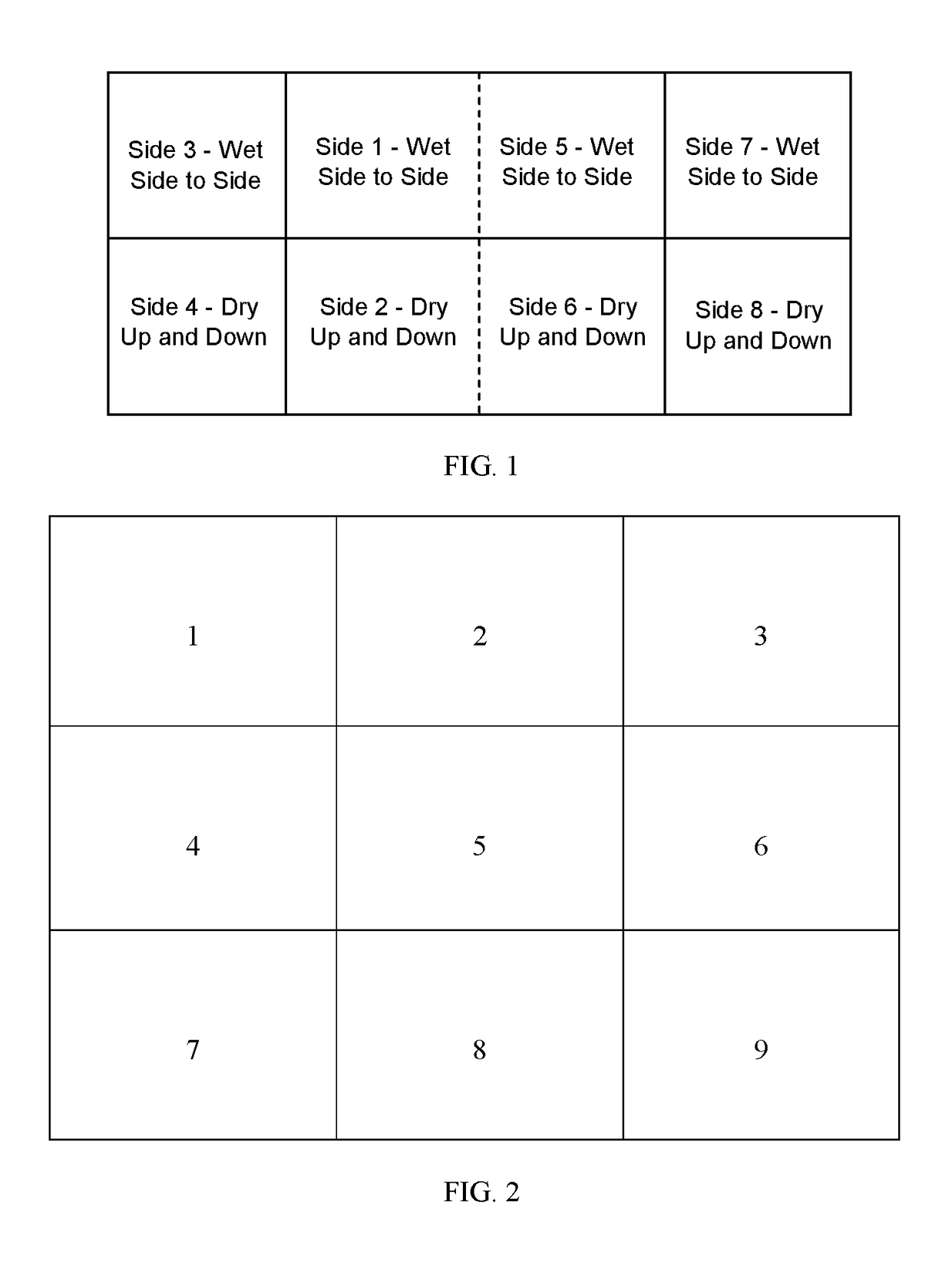Cleaning Articles Comprising Cleaning Agents
- Summary
- Abstract
- Description
- Claims
- Application Information
AI Technical Summary
Benefits of technology
Problems solved by technology
Method used
Image
Examples
example 1a
[0133]Preparation of a 1:1 by weight 7% active physical blend of 3.5% polyDADMAC homopolymer and 3.5% acrylamide-DADMAC-acrylic acid terpolymer aqueous solution at pH 4. Desired amounts of PolyDADMAC powder (89% active) (commercially available as Flobeads DB45SH from SNF, France) and Tinopal CBS powder (100% active) were first dissolved in water into which a desired amount of a terpolymer of acrylamide-DADMAC-acrylic acid solution (12% active) (commercially available as Merquat™ 3330 PR from Lubrizol Advanced Materials, Inc., Cleveland, Ohio) was added by stirring to make up 1 liter final water solution containing 3.5% DB45SH and 3.5% Merquar 3330 PR polymer blend. The pH of final solution was adjusted to pH 4 using H2SO4 as needed.
example 1b
[0134]Preparation of a 3:1 by weight 5% active physical blend of copolymers of acrylamide-MAPTAC and acrylamide-acrylic acid. Desired amounts of 5% active acrylamide-MAPTAC (99% AAM-1% MAPTAC) copolymer and 5% active acrylamide-acrylic acid (99% AAM-1% MAPTAC) copolymer aqueous solutions were mixed by stirring to prepare a 5% active blend with a weight ratio of 3(99% AAM-1% MAPTAC):1(99% AAM-1% AA).
example 1c
[0135]Preparation of a 16:3:1 by weight physical blend of polyacrylamide, polyDADMAC and polyacrylic acid homopolymers. A desired amount of a polyacrylamide homopolymer (Flopam FA920 SH) was first dissolved in water into which was added a desired amount of polyacrylic acid (Aldrich). The pH was adjusted to pH<6 to maintain acrylic acid polymer in an acidic form in order to prevent any potential interaction with cationic polyDADMAC. A desired amount of polyDADMAC aqeuous (commercially available as Flobeads DB45SH from SNF, France) was then added into polyacrylamide-polyacrylic acid aqueous solution to prepare a physical blend with a polymer weight ratio of 16AAM:3DADMAC:AA.
PUM
 Login to View More
Login to View More Abstract
Description
Claims
Application Information
 Login to View More
Login to View More - R&D
- Intellectual Property
- Life Sciences
- Materials
- Tech Scout
- Unparalleled Data Quality
- Higher Quality Content
- 60% Fewer Hallucinations
Browse by: Latest US Patents, China's latest patents, Technical Efficacy Thesaurus, Application Domain, Technology Topic, Popular Technical Reports.
© 2025 PatSnap. All rights reserved.Legal|Privacy policy|Modern Slavery Act Transparency Statement|Sitemap|About US| Contact US: help@patsnap.com



